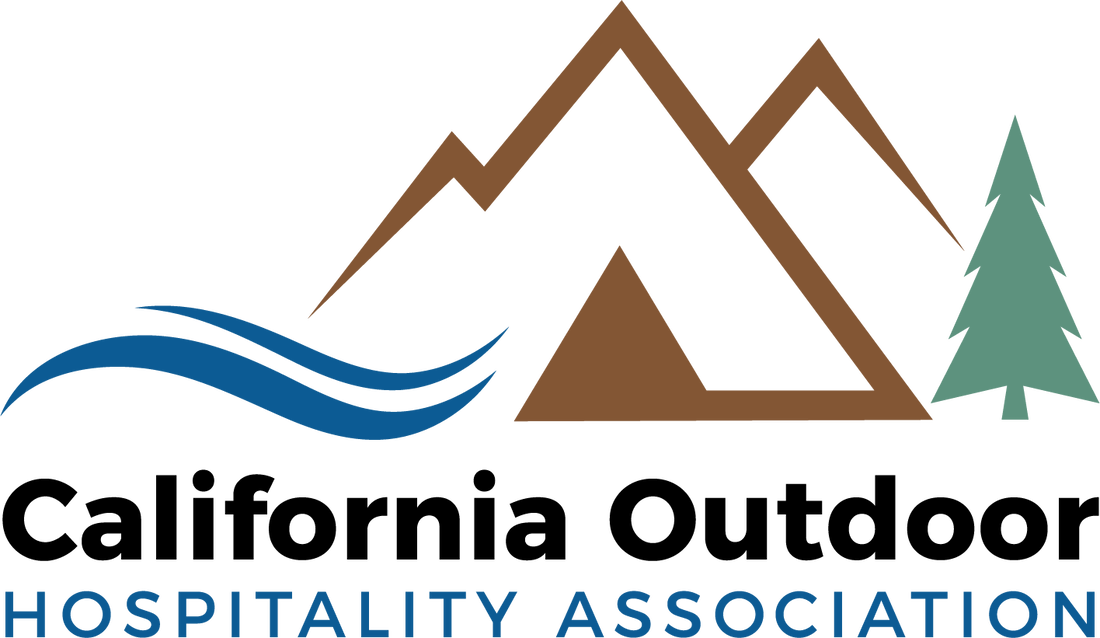|
by CampCalNOW CEO/President Dyana Kelley California's RV parks have recently become a pawn in politics between counties and the state as housing prices soar, and homelessness is on the rise.Escalating home sales/rents coupled with big urban money buying up land in rural residential and hillsides zones has created the perfect firestorm with RV parks and campgrounds as the kindling. While some counties relish the idea of expanding RV parks to accommodate an endless stream of eager campers, others are taking the NIMBY approach and turning their noses to an industry that has been around since the days of the covered wagons.
California’s RV parks walk a fine line between transient tourism occupancy and full-time housing. Which side of the line the park chooses to operate on is basically at the sole discretion of the owner, and investors and counties are beginning to take notice. In California, all RV parks are regulated by Housing and Community Development for the purposes of transient tourism occupancy with a 30-day length of stay limitation. Counties have the option to impose a more restrictive length of stay, however, the park owner may apply to the county for a waiver to the restrictions. The county must grant the waiver unless substantial findings that it would negatively impact tourism, or the community are discovered. SOPA 18865.2 (a) But this bit of regulatory has been around since the beginning of SOPA in 2003. So, who peed in the pool, and why do we all need to get out now? In every county up and down the state, there are RV parks operating as full-time housing, some in areas where mobile home parks are not allowed. Most of these parks have adopted professional standards of operation, but some have a less than desirable atmosphere for the communities in which they are located. County sheriff reports link an overabundance of calls to these properties. Many parks were built with septic or sewer systems meant to accommodate a transient RV park, not a continual flow of sewage from dozens of full-time residents. School systems are impacted without proper assessments and TOT’s or Tbids are not collected on stays longer than 30 days. These are all legitimate reasons for counties to begin looking at RV parks with a negative mindset but what effect will this have on California’s RV parks and our ability to run a profitable business. Additionally, upscale urban residents are now buying up land in areas once situated for, and maybe next to existing, RV parks and campgrounds and then NIMBYing up. Big money and loud voices are attracting the attention of county planning and development. Recently, one county planning commission moved to recommend the rezoning of RV parks. This appears to be an attempt to eventually eliminate RV parks within the county. RV parks will only be allowed in roadside services zones, of which the county only has one plot adequate for a park. While the current RV parks in Rural Residential or Hillside zones can continue to operate as legal non-conforming use, they will not be able to expand or make any permanent changes to their parks, including updating bathrooms, adding lodging, or even adding permanent structures like picnic tables. While we continue to ride the wave of an expanded camping season and 40% increase in camping tourism, is another pandemic on the horizon? One that could lead to the extinction of RV parks? CampCalNOW is bringing the chlorine and will continue to fight for the growth and expansion of the outdoor hospitality industry in order to allow our members the ability to provide a positive RV, camping, or residential experience to the consumer. If you are having similar experiences in your county, CampCalNOW would like to hear from you.
0 Comments
Leave a Reply. |
Check out more blog posts!
Categories
All
Archives
June 2024
|
|
2023 Copyright California Outdoor Hospitality Association. All Rights Reserved.
319 Nevada Street | Auburn, CA 95603 Phone: (530) 885-1624 | [email protected] | sitemap |

